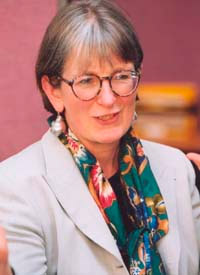By: Sheila Moorcroft
Resource prices are rising which should be good for waste reclamation and recycling: it increases economic viability, encourages new processes and behaviours. And provides new opportunities. Even the humble toilet may get a makeover into a power source. The War on Waste is hotting up.
What is changing?
A trial is underway in London to sift, strain and sort street sweepings for their component parts: stones and pebbles to aggregates, twigs to compost, dust to soil conditioning, plastic for recycling, metal particles for sale. With prices for some of the metal particles – palladium, platinum and rhodium -running at $1600 / ounce (ounce= ~28 grams) and more, the potential returns are rising too – despite the tiny amounts.
E-waste is becoming a global problem: we generated 53 million tonnes in 2009, with as little as 20%-25% being reclaimed and recycled in areas such as the EU and the USA as recently as 2008. Again, the incentive of price is there. While the percentage of precious metals per item is very small, the high prices and the growing mountains of waste make the quantities attractive. Making the behaviour shift to recycle, recapture and reuse remains a barrier.
Dung-power may become the fuel of the future. Google is investigating pig manure power, the US government is looking into the possibility of a GHG (Green House Gas) tax to create an incentive and cost advantage for livestock manure power over fossil fuels. The USA currently has about 2.2 million cattle, pigs and chickens collectively producing over 1 billion tonnes of manure. A Japanese process turns dung into hydrogen, with the potential for human waste applications too.
Why important?
Where there’s a will there’s a way: seeing the potential not the problem is critical. A new nano-particle based process uses ‘flotation’ to separate precious metals from rock waste. Bill Gates is also on a mission to reinvent the flushable toilet to improve sanitation and health, to get rid of the need for water and create reusable materials and resources, even bio-diesel. Elsewhere, waste heat is being converted directly to power using a new multiferroic alloy which becomes magnetic when heated and converts the heat to power in a surrounding coil.
Sustainability – whole-life costing, stewardship products designed for post consumer use/ re-use, lowest resource use, less impact on the environment- is becoming a strategic necessity, not an advantage: not only does it reduce costs, but enhances reputation and consumer attractiveness. We are also rapidly running out of landfill and while emerging economies may, for now, still be willing to take the west’s waste- including e-waste, they may not be for long.
The 20th century Yorkshire saying, where there’s muck there’s brass, could become a 21st century reality. The War on Waste, the WOW factor as we called it in a 2005 trend alert, is hotting up.
By Sheila Moorcroft
About the author
 Sheila has over 20 years experience helping clients capitalise on change – identifying changes in their business environment, assessing the implications and responding effectively to them. As Research Director at Shaping Tomorrow she has completed many futures projects on topics as diverse as health care, telecommunications, innovation management, and premium products for clients in the public and private sectors. Sheila also writes a weekly Trend Alert to highlight changes that might affect a wide range of organisations. www.ShapingTomorrow.com
Sheila has over 20 years experience helping clients capitalise on change – identifying changes in their business environment, assessing the implications and responding effectively to them. As Research Director at Shaping Tomorrow she has completed many futures projects on topics as diverse as health care, telecommunications, innovation management, and premium products for clients in the public and private sectors. Sheila also writes a weekly Trend Alert to highlight changes that might affect a wide range of organisations. www.ShapingTomorrow.com
